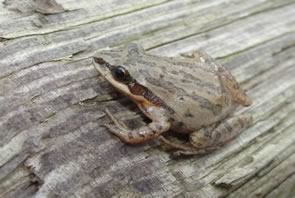
Pseudacris feriarum
Photo by Aubrey M. Heupel
Description: The upland chorus frog exhibits considerable individual variation in color and pattern. Body color ranges from greenish gray to reddish brown. A dark stripe runs along each side of its body, from snout to groin. Most individuals have three stripes or rows of blotches on their backs, a triangular spot between their eyes and a white line on their upper lips. The underside is granular and generally cream-colored, and some individuals have dark spots on their chests.
Habitats and Habits: Upland chorus frogs are most common in the Piedmont, although populations also exist in the Coastal Plain and the Mountains. They are usually found near grassy ditches, flooded fields and temporary wetlands. Outside the breeding season, upland chorus frogs are rarely encountered; however, non-breeding individuals are occasionally seen in woodlands, weedy meadows and swamps. The soft egg masses are attached to vegetation. The tadpole period lasts eight to 12 weeks.
Call: Upland chorus frogs call in winter and early spring. Their call is a regularly repeated “crrreek,” sounding similar to fingers running over the teeth of a comb.
Frog Fact: Upland chorus frogs appear to be relatively tolerant of human activities, often breeding in roadside ditches and other human-associated habitats.
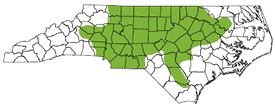
The shaded region represents the range of the upland chorus frog in North Carolina.
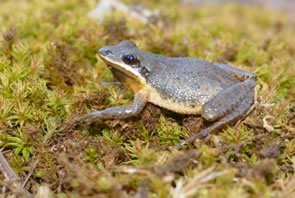
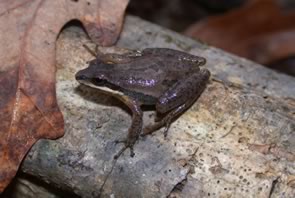
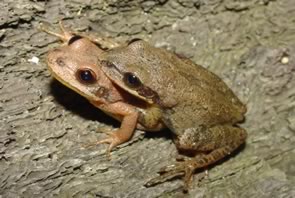
Photo by JD Willson
Two upland chorus frogs in amplexus.
Photo by Aubrey M. Heupel
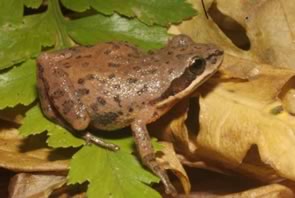
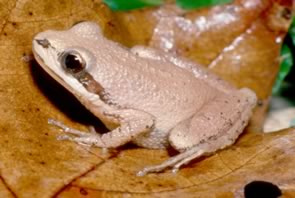
This website created by: Grant Connette and Evan Eskew.
For comments or questions contact M. Dorcas: midorcas@davidson.edu.
M. Dorcas homepage: http://bio.davidson.edu/dorcas
Davidson College, Davidson, North Carolina 28035-1719.
Text and maps from: Dorcas, M. E., S. J. Price, J. C Beane, and S. S. Cross. 2007. The Frogs and Toads of North Carolina. North Carolina Wildlife Resources Commission, Raleigh, NC. – Copyright by Michael E. Dorcas
Partial Funding for this website provided by a Associate Colleges of the South, National Science Foundation, and Duke Energy.
